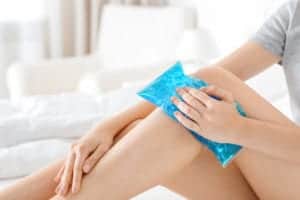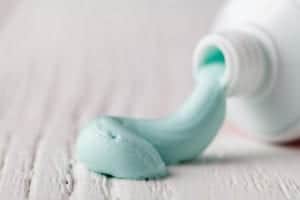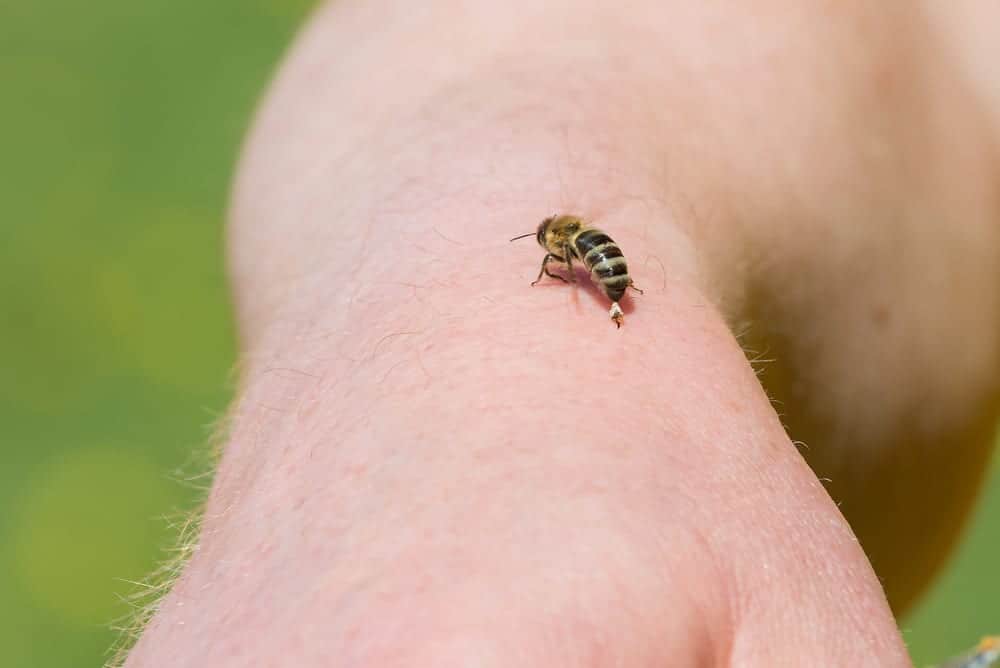You know the feeling — you are enjoying a pleasant walk through the woods or a picnic with your friends, then all of a sudden a bee sting ruins the fun! Fortunately, a bee sting is just a nuisance for most people where you experience temporary pain, itching, redness, and swelling at the sting site. If you have a serious allergic reaction with severe itching, difficulty breathing, nausea, and other severe symptoms, you should seek emergency help immediately. Otherwise, there are several things you can try at home to alleviate bee sting symptoms. Here are the top 5 home remedies for bee stings:
1. Use a Cold Compress
 If you have been stung by a honeybee, you should remove the stinger immediately using the edge of your fingernail or a credit card. This will help minimize the amount of toxins that are released into your skin. Note that honeybees are the only type of bee that die after they sting, while wasps and other specials do not lose their stingers and can sting multiple times. After washing the sting site with soap and water, apply a cold compress to help reduce the pain and swelling. Icing the sting is also the single most effective way to reduce the venom absorption.
If you have been stung by a honeybee, you should remove the stinger immediately using the edge of your fingernail or a credit card. This will help minimize the amount of toxins that are released into your skin. Note that honeybees are the only type of bee that die after they sting, while wasps and other specials do not lose their stingers and can sting multiple times. After washing the sting site with soap and water, apply a cold compress to help reduce the pain and swelling. Icing the sting is also the single most effective way to reduce the venom absorption.
2. Apply Baking Soda
Another one of the home remedies for bee stings is using baking soda mixed with water since the paste can help neutralize bee venom to reduce the pain, swelling, and itching. After applying a thick layer of baking soda, cover the paste with a bandage. Leave the paste on your skin for a minimum of 15 minutes and then reapply more as necessary.
3. Put Honey on the Sting
 Honey is a bee sting treatment that has been passed down for generations, and it may provide help with healing the wound. Honey has been found to alleviate the pain and itching associated with a bee sting. Simply apply a small amount of honey to the affected area, cover the sting with a loose bandage, and leave the bandage on for up to an hour.
Honey is a bee sting treatment that has been passed down for generations, and it may provide help with healing the wound. Honey has been found to alleviate the pain and itching associated with a bee sting. Simply apply a small amount of honey to the affected area, cover the sting with a loose bandage, and leave the bandage on for up to an hour.
4. Utilize Meat Tenderizer
There is an enzyme in meat tenderizer known as papain that is believed to help break down the protein that causes the pain and itching from a bee sting. Make a solution consisting of one part meat tenderizer and four parts water, then apply the solution to the sting site for up to 30 minutes.
5. Cover the Sting with Toothpaste
 While this might sound unusual, toothpaste is actually one of the top home remedies for bee stings! While it has never been scientifically proven toothpaste helps bee stings, many folks claim alkaline toothpaste helps to neutralize honeybee venom. Therefore, just dab a bit on the affected area to try this unique home remedy. Keep in mind this will only work for stings from honeybees, but not for stings from wasps and other species of bees.
While this might sound unusual, toothpaste is actually one of the top home remedies for bee stings! While it has never been scientifically proven toothpaste helps bee stings, many folks claim alkaline toothpaste helps to neutralize honeybee venom. Therefore, just dab a bit on the affected area to try this unique home remedy. Keep in mind this will only work for stings from honeybees, but not for stings from wasps and other species of bees.
When You Should See a Doctor
Remember most bee stings do not require a visit to the doctor, but there are individuals who are highly allergic to the venomous toxin in a bee sting. If you are allergic to bees, the stings can not only be problematic but life threatening. If you have any signs of a severe reaction to a bee sting, you should always get emergency help. Otherwise, if your bee sting symptoms don’t improve after a few days, you should make an appointment with your doctor.
You are familiar with the top home remedies for bee stings now, so hopefully you can quickly alleviate the pain from these annoying stings! Mac’s Pharmacy is dedicated to improving your health and well-being, so learn more about how we can assist you with all of your pharmaceutical needs!









